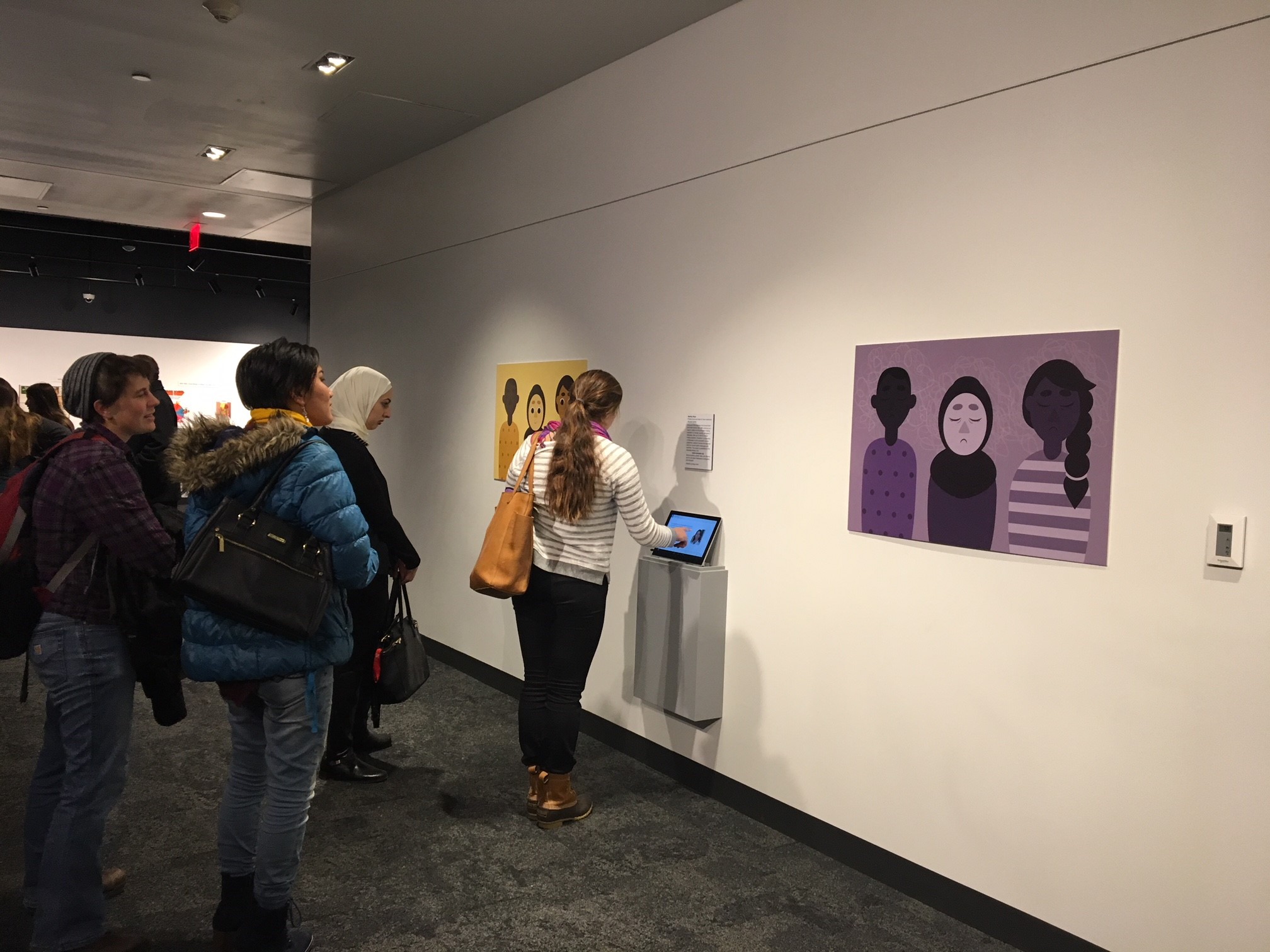
A multimedia reporting project produced by students in the College of Journalism and Mass Communications is now part of a five-month long exhibit at the Nebraska History Museum.
The reporting project, produced by students in the Nebraska Mosaic capstone course, focuses on the theme of mental health and refugees. It is being showcased as part of “Looking Past Skin: Our Common Threads,” an interactive exhibit that presents the sociological, agricultural and historical perspectives on migration and the more recent demographic shifts in the state. Nebraska Mosaic partnered with the University of Nebraska’s Minority Health Disparities Initiative, Nebraska Extension and the Nebraska History Museum to create the exhibit.
The “Looking Past Skin” exhibit includes a timeline that depicts Nebraska’s immigration and showcases historic and modern-day artifacts; a Wall of Windows that includes photographs and stories from Latinos and Somalis in Dawson County; an interactive display that simulates a visit to the doctor and demonstrates the complexities of speaking a non-native language; and a “Food is History” display that explores finding nutritional food in a new country. The Nebraska Mosaic display includes student artwork and the multimedia reporting project, which can be viewed on a tablet.
“We were so pleased to be invited to participate in this remarkable exhibit,” said assistant professor of practice Michelle Hassler, who teaches the Mosaic course. “It is a tremendous opportunity for our students to showcase their work to the community.”
As part of Mosaic’s reporting project – “Healing Ways: Finding Hope and Help for New Americans Who are Hurting” – students wrote stories about the problems Lincoln refugees face and the solutions being explored. Refugees often are at-risk for mental illness because they must cope with an often tumultuous past while dealing with the stresses of adjusting to a new country. Mosaic students interviewed a variety of people – from a refugee who had been enslaved by ISIS to a psychologist who treats victims of trauma and torture. Some of the 12 students who wrote stories also took on additional roles as graphic designers and editors.
“It truly was a team effort,” Hassler said. “I was so impressed with how hard the students worked and how well they handled such a challenging topic.”
The class included undergrads Margaret Davenport, Alexa Horn, Scott Jenkins, Wellesley Michael, Julia Nguyen, Natasya Ong, Abby Styrker, Matthew Walsh and Tess Williams and graduate students Utami Kusumawati, Jason McCoy and Patricia Nangkal.
In the Nebraska Mosaic course, students focus on providing news and information for and about state’s refugees and immigrants. They study global issues and interview people from all over the world as they practice multimedia storytelling. Since the Nebraska Mosaic site (http://www.nemosaic.org) launched in 2011, more than 450 student-produced stories have been published.
The mosaic project can be viewed at https://nebraskamosaic.atavist.com/healing-ways.
The “Looking Past Skin” exhibit, which is free and open to the public, runs through May 15 at the museum, 131 Centennial Mall North.